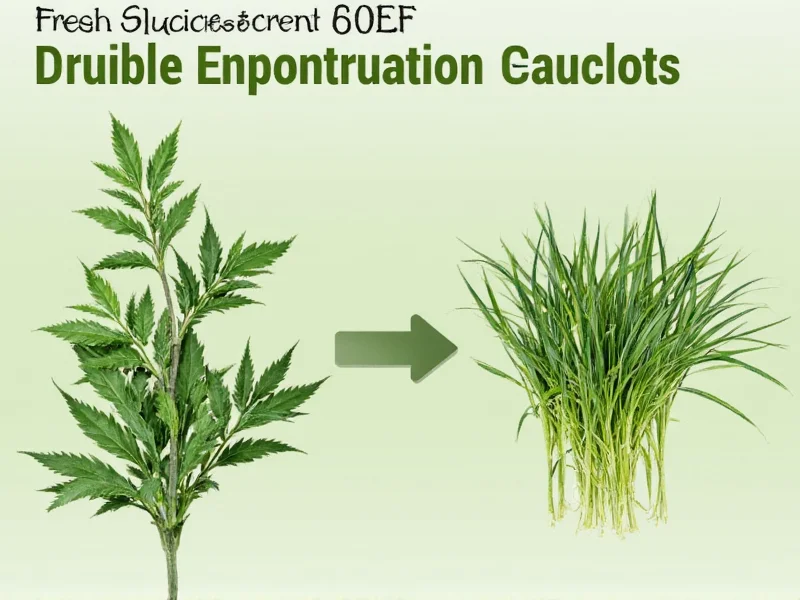Understanding fresh to dried herb conversion is essential for consistent results in cooking and baking. When you replace fresh herbs with dried in recipes, the difference in water content significantly impacts flavor intensity. Fresh herbs contain about 80-90% water, while dried herbs have most moisture removed, making them more concentrated.
Why Herb Conversion Ratios Matter
Using improper measurements can ruin dishes—too much dried herb creates overpowering bitterness, while too little yields bland results. The general 3:1 fresh to dried herb conversion calculator ratio works for most culinary applications, but specific herbs vary based on their essential oil content and structure.
Comprehensive Fresh to Dried Herb Conversion Chart
| Herb | Fresh Measurement | Dried Equivalent | Special Considerations |
|---|---|---|---|
| Basil | 3 tbsp | 1 tbsp | Delicate flavor; reduce by 25% for long-cooking dishes |
| Oregano | 3 tbsp | 1 tbsp | Stronger when dried; consider 2.5:1 ratio for Mediterranean dishes |
| Rosemary | 3 tbsp | 1.5 tsp | Highly concentrated when dried; use less than standard ratio |
| Thyme | 3 tbsp | 1 tsp | Woody stems reduce usable portion; adjust accordingly |
| Parsley | 3 tbsp | 1 tbsp | Milder flavor when dried; good for soups and stews |
| Cilantro | 3 tbsp | 2 tsp | Loses distinctive flavor when dried; fresh preferred |
| Dill | 3 tbsp | 1.5 tsp | Delicate; use half the standard ratio for best results |
| Mint | 3 tbsp | 1.5 tsp | Stronger when dried; reduce for beverages and desserts |
Factors That Affect Fresh to Dried Herb Conversion
Herb Type and Structure
Leafy herbs like basil and parsley follow the standard 3:1 ratio more closely than woody herbs like rosemary and thyme, which require less dried product due to higher concentration of essential oils. Understanding these herb substitution nuances prevents flavor imbalances in your dishes.
Drying Method Matters
The way herbs are dried impacts their potency:
- Air-dried herbs typically retain more flavor compounds than oven-dried
- Commercially dried herbs often use higher heat, reducing potency slightly
- Home-dehydrated herbs at low temperatures preserve more volatile oils
Storage Conditions and Age
Dried herbs lose potency over time. Properly stored in airtight containers away from light, they maintain quality for 6-12 months. Older dried herbs may require slightly more than standard conversion ratios to achieve desired flavor. This practical dried herb equivalent calculator consideration ensures consistent results regardless of herb age.
Practical Application Tips
When Converting Recipes
For best results with your fresh herb conversion chart:
- Add dried herbs earlier in cooking to allow flavors to infuse
- Crush dried herbs between fingers before adding to release oils
- For delicate dishes, start with 75% of the calculated amount and adjust
- Remember that dried herbs work better in long-simmering dishes than fresh
Special Cases and Exceptions
Some herbs don't convert well through standard fresh to dried herb measurement conversion:
- Cilantro loses its distinctive flavor when dried—substitute with parsley or dried coriander seeds instead
- Chives become nearly flavorless when dried—use onion powder as alternative
- Basil develops different flavor compounds when dried—consider using half dried basil and half fresh oregano for Italian dishes
Creating Your Own Fresh to Dried Herb Conversion Calculator
While the standard ratios provide a solid foundation, developing your personal culinary herb measurement guide ensures perfect results. Keep a kitchen journal noting:
- Which herbs you dried and your method
- Conversion ratios that worked for specific recipes
- Adjustments needed based on storage time
This personalized approach to herb drying ratio reference creates a customized resource that accounts for your specific growing conditions, drying techniques, and taste preferences.
Storage Recommendations for Optimal Potency
Proper storage maintains the accuracy of your fresh to dried herb conversion calculator:
- Store dried herbs in airtight glass containers away from light and heat
- Label containers with harvest and drying dates
- Keep whole dried leaves intact until use (crush just before adding)
- Test potency by rubbing and smelling—faint aroma indicates reduced strength
Common Mistakes to Avoid
Even with a reliable fresh to dried herb conversion chart, these errors commonly occur:
- Using volume measurements for potent herbs like rosemary (switch to weight)
- Not accounting for recipe cooking time (longer cooking requires less dried herb)
- Using old dried herbs without adjusting quantities
- Substituting dried for fresh in raw applications like salads or garnishes











 浙公网安备
33010002000092号
浙公网安备
33010002000092号 浙B2-20120091-4
浙B2-20120091-4